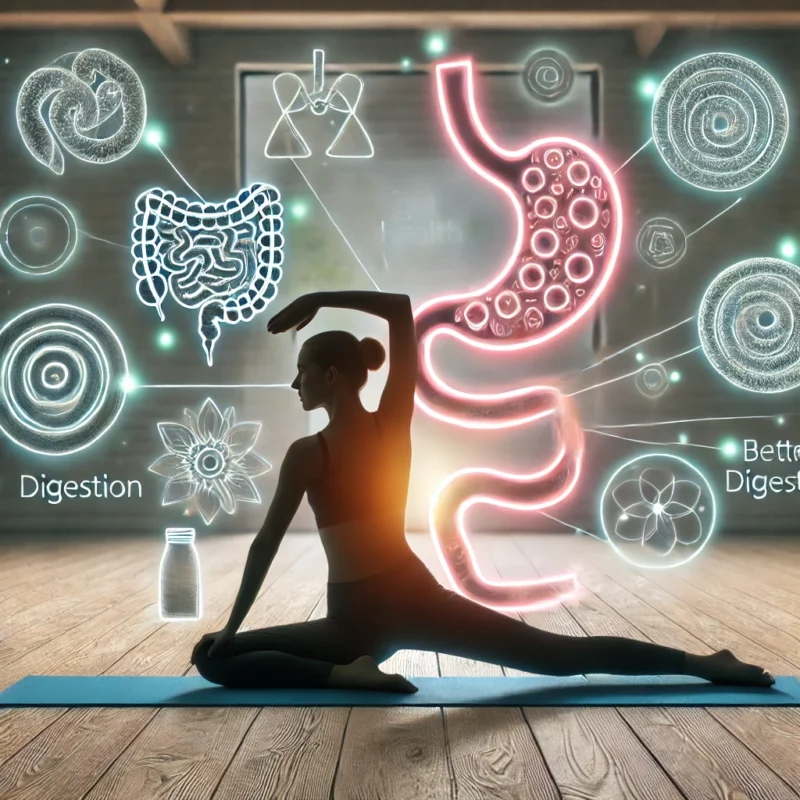We live in an age where physical inactivity has become one of the leading causes of health issues worldwide. With desk jobs, long hours in front of screens, and the lure of sedentary entertainment, staying active is often overlooked. While most people know that exercise helps with weight control, heart health, and mental well-being, the true benefits of staying active every day go far beyond these obvious perks.
What if being active could make you more creative? Strengthen your relationships? Even improve your gut health? These are just a few of the unexpected rewards that regular physical activity can bring. Beyond the surface, daily movement can transform various aspects of life in ways that often go unnoticed.
This blog will dive deep into five surprising benefits of daily physical activity. By understanding these hidden gems, you’ll see how integrating movement into your daily routine can lead to a richer, more fulfilling life. Let’s explore how staying active can do more than just keep you fit—it can change your entire outlook.
Table of Contents
1. Enhanced Creativity and Problem-Solving Skills

When faced with a tough problem or creative block, your first instinct might be to sit and brainstorm solutions. However, research suggests you might be better off taking a walk. Physical activity, especially aerobic exercises like walking, running, or cycling, is known to boost creativity and improve problem-solving skills.
The Science Behind It
Exercise stimulates the release of endorphins, dopamine, and serotonin, all of which enhance mood and mental clarity. Even more importantly, moderate physical activity increases blood flow to the brain, particularly to the prefrontal cortex, responsible for higher-order thinking, decision-making, and creativity.
- Studies Supporting the Connection:
- A Stanford University study found that participants who walked, whether indoors or outdoors, generated more creative ideas than those who remained seated.
- Research published in the journal Psychonomic Bulletin & Review demonstrated that light aerobic exercise improves divergent thinking, the cognitive process used to generate creative ideas.
Real-Life Examples
Creative thinkers throughout history have used physical activity as a way to spark inspiration. Steve Jobs, the co-founder of Apple, famously held walking meetings to brainstorm innovative ideas. Similarly, Beethoven was known to take long walks with a notebook, jotting down musical ideas that came to him during these sessions.
How to Incorporate Creativity-Boosting Movement
- Take short, brisk walks during work breaks to refresh your mind.
- Try scheduling walking meetings instead of traditional sit-down discussions.
- Use downtime during exercise—whether on a treadmill or during a yoga session—to reflect on challenges and generate ideas.
By making movement a regular part of your day, you’ll find that mental blocks dissolve, and solutions to problems arise naturally.
2. Boosts Immune System Functionality

With flu seasons, pandemics, and rising health concerns, having a strong immune system is crucial. While vitamins and a healthy diet play a big role, regular physical activity is one of the most effective ways to bolster your body’s natural defenses.
The Science of Exercise and Immunity
Moderate physical activity enhances immune system function by promoting the circulation of white blood cells and antibodies. These cells are vital for detecting and combating pathogens. Exercise also reduces levels of stress hormones like cortisol, which, when chronically elevated, can suppress immunity.
- Key Findings:
- A study published in the Journal of Sport and Health Science found that people who exercised moderately were 40% less likely to develop respiratory infections compared to sedentary individuals.
- Regular activity has been shown to enhance the efficiency of the lymphatic system, which helps remove toxins and waste from the body.
Practical Benefits
People who engage in regular exercise report fewer sick days and faster recovery times when they do fall ill. Even light activities like walking can stimulate the immune system, making it more responsive to potential threats.
How to Boost Immunity Through Movement
- Aim for at least 150 minutes of moderate aerobic exercise per week, such as brisk walking, cycling, or swimming.
- Balance activity with rest to avoid overtraining, which can temporarily suppress immune function.
- Combine exercise with stress-reducing activities like yoga or tai chi for added immune-boosting effects.
By staying active, you’re not just building strength or endurance—you’re giving your immune system the tools it needs to keep you healthy.
3. Improved Relationships and Social Connections

One of the less obvious benefits of staying active is its ability to enhance your social life. Physical activity often brings people together, fostering connections and strengthening relationships.
How Activity Fosters Connection
Whether it’s joining a fitness class, participating in a team sport, or simply going for a walk with a friend, exercise provides a natural setting for interaction. Shared physical activities create a sense of camaraderie and teamwork, which can deepen bonds.
- The Endorphin Effect: Exercise triggers the release of endorphins, hormones that not only boost your mood but also enhance feelings of connection and trust. These effects make it easier to build and maintain relationships.
Examples of Social Benefits
- Group fitness classes like yoga, CrossFit, or Zumba often lead to friendships and a sense of belonging within the community.
- Outdoor activities, such as hiking or cycling, allow for meaningful conversations in a relaxed environment.
- Team sports teach collaboration and mutual respect, skills that extend to personal and professional relationships.
How to Build Social Connections Through Activity
- Join local fitness groups or sports leagues that align with your interests.
- Use apps like Meetup or Strava to find exercise partners or communities near you.
- Make physical activity a family affair by going on bike rides, playing sports, or doing yoga together.
By integrating movement into your social life, you not only improve your health but also build lasting relationships.
4. Promotes Longevity and Anti-Aging

Staying active is one of the most effective ways to slow the aging process. While aging is inevitable, daily physical activity can keep your body and mind younger for longer.
The Science of Exercise and Aging
- Cellular Health: Exercise protects telomeres, the protective caps on the ends of chromosomes. Longer telomeres are associated with slower aging and reduced risk of age-related diseases.
- Blood Flow and Organ Health: Regular movement improves circulation, delivering oxygen and nutrients to organs and skin, which can delay visible signs of aging.
Real-Life Examples
Stories abound of older individuals defying stereotypes through their active lifestyles. From 80-year-old marathoners to seniors practicing yoga, these examples highlight how staying active promotes vitality.
How to Stay Active for Longevity
- Focus on low-impact activities like swimming, tai chi, or brisk walking.
- Incorporate strength training to maintain muscle mass and bone density.
- Practice mindfulness during exercise to reduce stress, a major contributor to aging.
By moving daily, you not only add years to your life but also add life to your years.
5. Better Gut Health and Digestion

Gut health is often overlooked, yet it plays a critical role in overall well-being. Surprisingly, staying active can have profound effects on your digestive system and gut microbiome.
Exercise and the Gut
Physical activity promotes gut motility, helping food move through the digestive system more efficiently. It also fosters diversity in the gut microbiome, the collection of bacteria that influences everything from digestion to mood.
- Key Findings:
- Regular exercise has been linked to increased levels of beneficial gut bacteria.
- Activities like yoga improve digestion by massaging the internal organs through various poses.
How to Improve Gut Health Through Activity
- Take short walks after meals to aid digestion.
- Try yoga poses like twists and forward folds that stimulate the digestive system.
- Stay hydrated, especially during exercise, to support optimal gut function.
With better digestion comes improved energy levels, reduced bloating, and overall enhanced well-being.
Conclusion: A New Perspective on Staying Active
Staying active every day offers more than just physical fitness—it opens doors to unexpected benefits that enhance every aspect of life. From sparking creativity and strengthening your immune system to building relationships, promoting longevity, and improving gut health, the advantages are both surprising and transformative.
If you’ve been struggling to make exercise a regular habit, let these hidden benefits motivate you. Start small, stay consistent, and find activities you enjoy. Whether it’s a morning walk, an evening yoga session, or a weekend hike, every step you take brings you closer to a healthier, happier life.
The journey to better health doesn’t have to be daunting. It starts with movement, and with movement comes change—both expected and unexpected. Embrace the power of staying active, and watch how it transforms your life in ways you never imagined.
